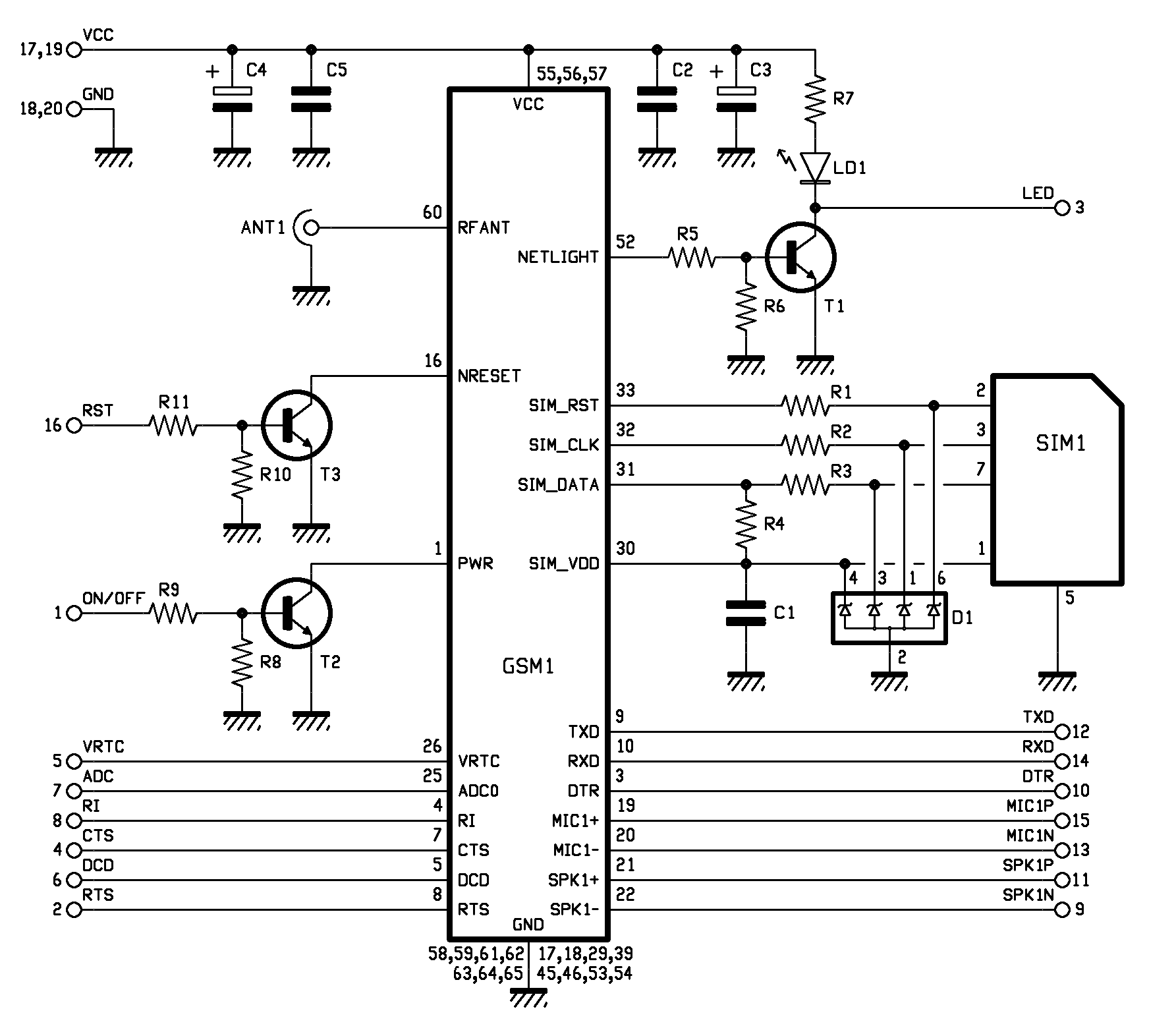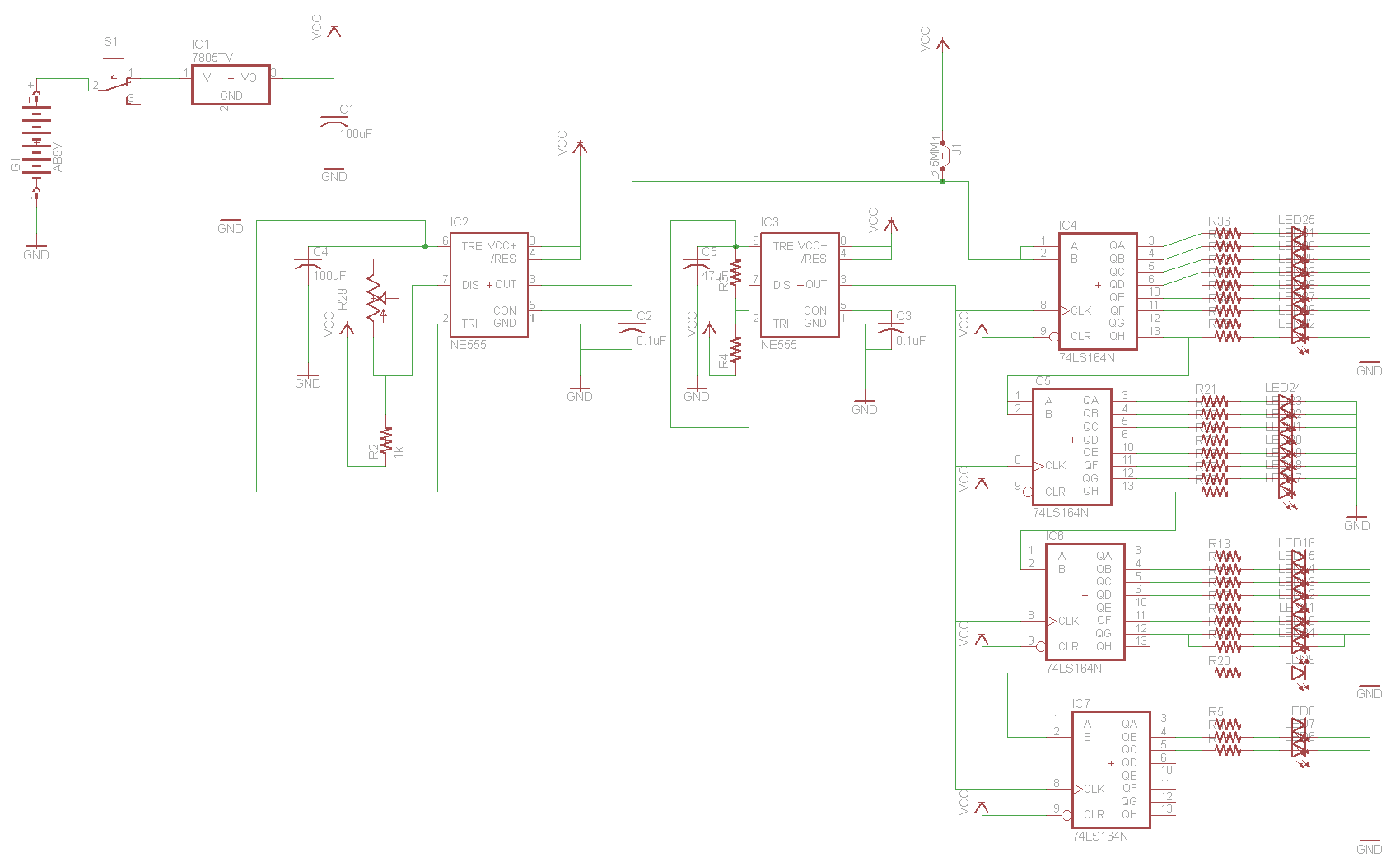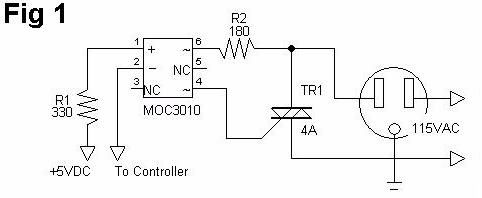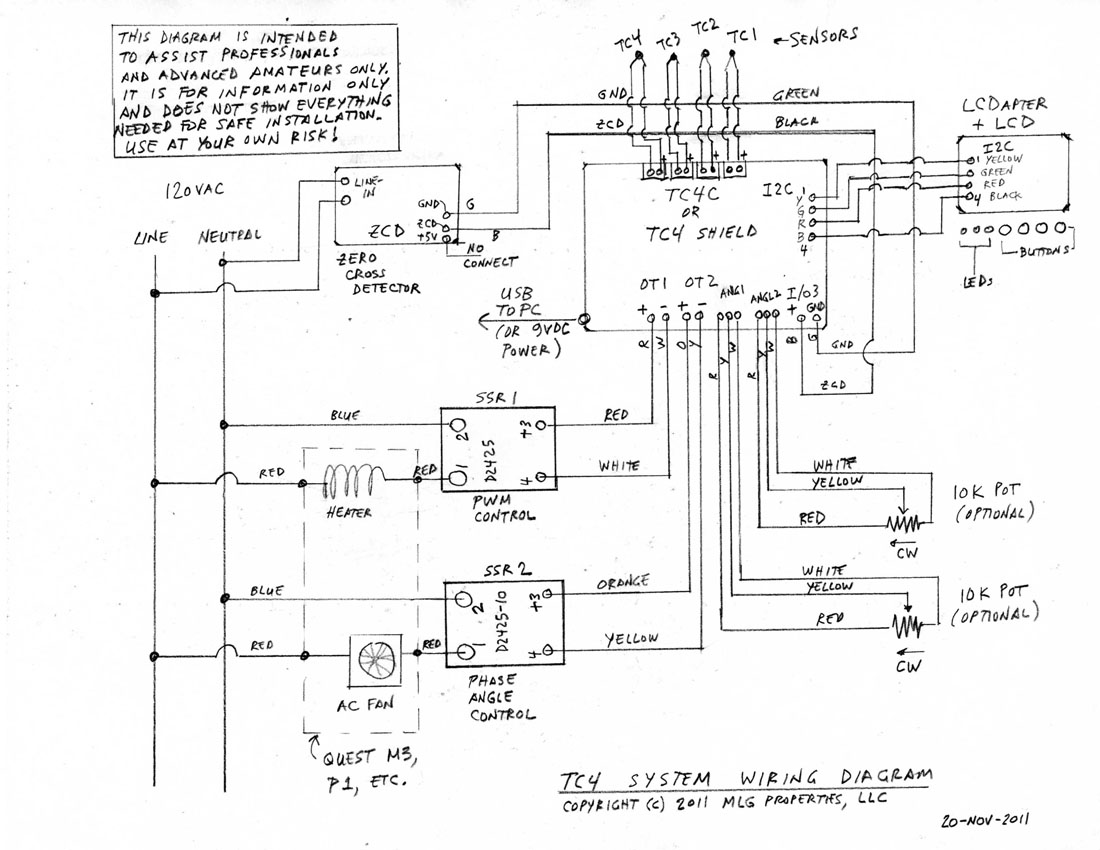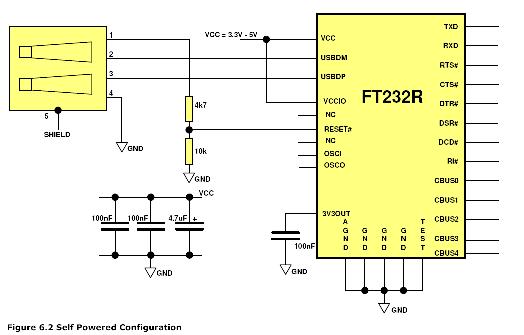
ssr breakout boards
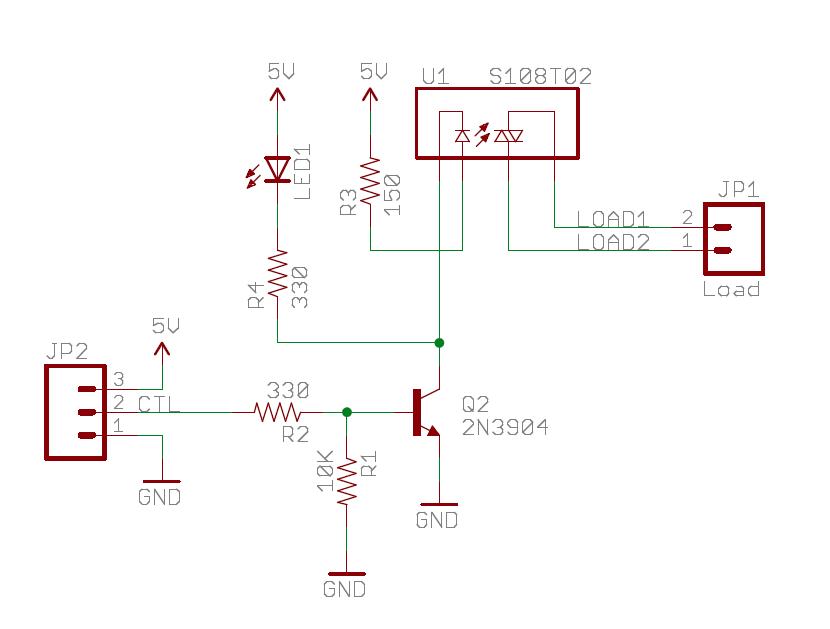
The Sparkfun Solid State Relay (SSR) Breakout Board operates similarly to a traditional relay but utilizes semiconductors for switching. It is powered by the mbed VU 5V supply and is compatible with any mbed digital output pin. The schematic for the Sparkfun Solid State Relay board features a S108T02 Sharp SSR module, capable of switching 125VAC at 8A (AC only, not DC). The board requires an on-board driver circuit, with external wire connections mirroring those of typical relay boards. A transistor driver circuit is employed to control the SSR module, which can be activated by any digital output pin connected to the control input (CTL - JP2-2) of the SSR driver circuit. The SSR module includes a TRIAC output with optically isolated control inputs. Caution is advised when handling high voltage power lines, as improper connections can lead to severe damage to electronic systems or personal injury. It is essential to maintain a safe distance between high voltage/high current wires and breadboard setups, and to avoid contact with these wires when powered. An inline fuse or GFI breaker is recommended to enhance safety, as electronic components may fail before a standard household AC circuit breaker activates. The bottom side of the PCB should be kept clear of metallic surfaces to prevent shorts. Breadboard contacts and small jumper wires typically support only about one amp of current. Relay boards generally feature screw terminals for connecting larger wires necessary for external devices. Driving the coil of a large relay may consume most of the current available from the mbed via USB, thus necessitating an external DC power supply to energize relay coils and external device loads. For electrical isolation when controlling external AC or high voltage DC devices, it is crucial not to connect the grounds of the control side and load side power supplies. In a demonstration setup, one wire from a 2-wire AC extension cord was cut, stripped, and connected to the screw terminals designated for the load, allowing a lamp to be controlled via the SSR. The demo code activates the SSR to turn the lamp on and off every 4 seconds, demonstrating the absence of an audible click typical of mechanical relays, as well as the activity of indicator LEDs on both the mbed and the SSR board. While some SSRs can dim lights, this particular model lacks the phase control sense circuit necessary for dimming, though it does incorporate a zero-crossing circuit to minimize RF noise emissions. A heat sink is required for the SSR module when operating near its rated load. The Phidgets SSR board can switch both AC and DC voltages at lower levels using a small NEC/CEL SSR IC and employs two MOSFETs for switching instead of a TRIAC, allowing it to handle both AC and DC.
The Sparkfun Solid State Relay Breakout Board is designed for interfacing with microcontrollers such as the mbed, providing a means to control high voltage AC loads safely and efficiently. The integration of the S108T02 Sharp SSR module allows for robust performance in switching applications, with a maximum load capacity of 125VAC at 8A. The board's design incorporates necessary safety features, such as optically isolated control inputs, ensuring that the microcontroller's low voltage side remains isolated from the high voltage load side.
In practical applications, the SSR can be utilized in various automation projects, including home automation systems, lighting control, and industrial equipment management. The use of a transistor driver circuit facilitates the control of the SSR with minimal current draw from the microcontroller, making it suitable for integration into low-power systems.
The implementation of a zero-crossing detection circuit within the SSR aids in reducing electromagnetic interference, which is particularly beneficial in sensitive electronic environments. The absence of mechanical components in the SSR results in faster switching times and increased reliability compared to traditional electromechanical relays.
When deploying the SSR in a circuit, it is pertinent to ensure that adequate heat dissipation measures are in place, especially when operating near the maximum load specifications. The addition of a heat sink is recommended to maintain optimal operating temperatures and prolong the lifespan of the SSR module.
For applications requiring both AC and DC switching capabilities, alternative SSR solutions, such as the Phidgets SSR board, offer versatility with the use of MOSFETs, accommodating a broader range of voltage and current specifications. This flexibility allows designers to select the appropriate SSR based on the specific requirements of their projects, ensuring efficient and safe operation in diverse applications.The Sparkfun Solid State Relay (SSR) Breakout Board is shown below. An SSR works like a relay but is built using semiconductors for switching. It will run off of mbed`s VU 5V supply and works with any mbed digital output pin. The schematic is shown below for the Sparkfun Solid State Relay board seen above. It uses a S108T02 Sharp SSR module and ca n switch 125VAC at 8A (AC only - not DC). Note that it also requires an on-board driver circuit, and the external wire connections are the same as most relay boards. A transistor driver circuit is used to control the SSR module. Any digital out pin can be used to control the SSR (connects to the control input (CTL - JP2-2) of the SSR driver circuit).
The SSR module has a TRIAC output with optically isolated control inputs. A high voltage power line shorted to a digital logic circuit on a breadboard can blow up an entire computer system, or cause electrocution if touched. For safety, keep the wires for any high voltage and/or high current devices well away from the breadboard and do not touch them when power is on.
Even a momentary wire short can blow things ups. An inline fuse and even a GFI breaker is not a bad idea. Long before a standard household AC circuit breaker trips, electronic parts will blow out with a short. Make sure that the bottom side of the PCB does not short out on any metallic surfaces. Breadboard contacts and small jumper wires only handle about one amp. The relay boards typically use screw terminals to attach the larger wires needed for the external device.
Just driving the coil of a large relay requires most of the additional current that can be supplied to mbed via the USB cable, so an external DC power supply will likely be needed to power the relay coils and the load of the external device. For electrical isolation, when using a relay to control external AC devices or high voltage DC devices, do not connect the grounds on the power supplies from the control side to the load side.
For the demo, one of the wires in a 2-wire AC extension cord was cut, pulled apart, stripped back, and each end attached to one of the two black screw terminals used for the load. The lamp was them plugged into the extension cord. In the video above running the demo code, the SSR turns the lamp on and off every 4 seconds. Note the lack of an audible click (unlike a mechanical relay), and the indicator LEDs changing, mbed LED1 and the green LED on the SSR board.
Some SSRs can dim lights, but this one does not have the phase control sense circuit needed. It does have a zero crossing circuit to reduce RF noise emissions. A heat sink for the SSR module is needed at anything near the rated load. The Phidgets SSR board seen below can switch both AC and DC voltages at lower voltage and current levels. It uses a small NEC/CEL SSR IC. Instead of a TRIAC, two MOSFETS are used for switching, so it can switch DC or AC. 🔗 External reference
The Sparkfun Solid State Relay Breakout Board is designed for interfacing with microcontrollers such as the mbed, providing a means to control high voltage AC loads safely and efficiently. The integration of the S108T02 Sharp SSR module allows for robust performance in switching applications, with a maximum load capacity of 125VAC at 8A. The board's design incorporates necessary safety features, such as optically isolated control inputs, ensuring that the microcontroller's low voltage side remains isolated from the high voltage load side.
In practical applications, the SSR can be utilized in various automation projects, including home automation systems, lighting control, and industrial equipment management. The use of a transistor driver circuit facilitates the control of the SSR with minimal current draw from the microcontroller, making it suitable for integration into low-power systems.
The implementation of a zero-crossing detection circuit within the SSR aids in reducing electromagnetic interference, which is particularly beneficial in sensitive electronic environments. The absence of mechanical components in the SSR results in faster switching times and increased reliability compared to traditional electromechanical relays.
When deploying the SSR in a circuit, it is pertinent to ensure that adequate heat dissipation measures are in place, especially when operating near the maximum load specifications. The addition of a heat sink is recommended to maintain optimal operating temperatures and prolong the lifespan of the SSR module.
For applications requiring both AC and DC switching capabilities, alternative SSR solutions, such as the Phidgets SSR board, offer versatility with the use of MOSFETs, accommodating a broader range of voltage and current specifications. This flexibility allows designers to select the appropriate SSR based on the specific requirements of their projects, ensuring efficient and safe operation in diverse applications.The Sparkfun Solid State Relay (SSR) Breakout Board is shown below. An SSR works like a relay but is built using semiconductors for switching. It will run off of mbed`s VU 5V supply and works with any mbed digital output pin. The schematic is shown below for the Sparkfun Solid State Relay board seen above. It uses a S108T02 Sharp SSR module and ca n switch 125VAC at 8A (AC only - not DC). Note that it also requires an on-board driver circuit, and the external wire connections are the same as most relay boards. A transistor driver circuit is used to control the SSR module. Any digital out pin can be used to control the SSR (connects to the control input (CTL - JP2-2) of the SSR driver circuit).
The SSR module has a TRIAC output with optically isolated control inputs. A high voltage power line shorted to a digital logic circuit on a breadboard can blow up an entire computer system, or cause electrocution if touched. For safety, keep the wires for any high voltage and/or high current devices well away from the breadboard and do not touch them when power is on.
Even a momentary wire short can blow things ups. An inline fuse and even a GFI breaker is not a bad idea. Long before a standard household AC circuit breaker trips, electronic parts will blow out with a short. Make sure that the bottom side of the PCB does not short out on any metallic surfaces. Breadboard contacts and small jumper wires only handle about one amp. The relay boards typically use screw terminals to attach the larger wires needed for the external device.
Just driving the coil of a large relay requires most of the additional current that can be supplied to mbed via the USB cable, so an external DC power supply will likely be needed to power the relay coils and the load of the external device. For electrical isolation, when using a relay to control external AC devices or high voltage DC devices, do not connect the grounds on the power supplies from the control side to the load side.
For the demo, one of the wires in a 2-wire AC extension cord was cut, pulled apart, stripped back, and each end attached to one of the two black screw terminals used for the load. The lamp was them plugged into the extension cord. In the video above running the demo code, the SSR turns the lamp on and off every 4 seconds. Note the lack of an audible click (unlike a mechanical relay), and the indicator LEDs changing, mbed LED1 and the green LED on the SSR board.
Some SSRs can dim lights, but this one does not have the phase control sense circuit needed. It does have a zero crossing circuit to reduce RF noise emissions. A heat sink for the SSR module is needed at anything near the rated load. The Phidgets SSR board seen below can switch both AC and DC voltages at lower voltage and current levels. It uses a small NEC/CEL SSR IC. Instead of a TRIAC, two MOSFETS are used for switching, so it can switch DC or AC. 🔗 External reference

